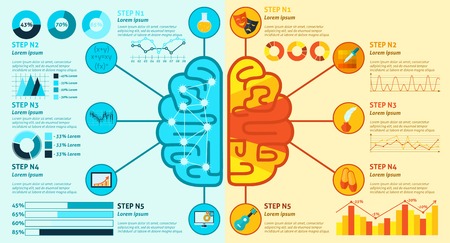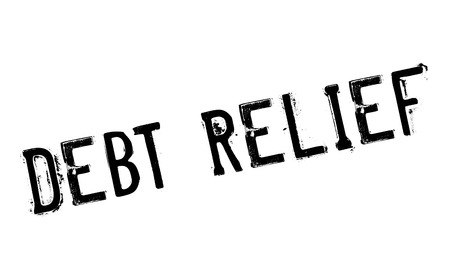1. Understanding Anxiety: An Overview
Anxiety is a normal part of life, but for many people in the United States, it can become overwhelming and interfere with daily activities. Cognitive Behavioral Therapy (CBT) is one of the most effective treatments for managing anxiety, and understanding what anxiety really is helps set the stage for how CBT works.
What Is Anxiety?
Anxiety is more than just feeling nervous before a big test or important meeting. It’s a persistent feeling of worry or fear that doesn’t go away and can even get worse over time. In the U.S., anxiety disorders are among the most common mental health challenges, affecting people from all walks of life.
Common Symptoms of Anxiety
| Physical Symptoms | Emotional Symptoms | Behavioral Symptoms |
|---|---|---|
| Racing heart Sweating Shortness of breath Muscle tension Headaches |
Constant worry Restlessness Irritability Feeling overwhelmed Fear of losing control |
Avoiding certain places or situations Difficulty concentrating Procrastination Compulsive behaviors |
How Anxiety Affects Everyday Life in America
Anxiety can show up in many areas of everyday life. For example, someone might avoid social gatherings because they’re afraid of embarrassment, or a student might struggle to focus on homework due to constant worrying. At work, anxiety can lead to missed deadlines and increased stress levels. In families, it may cause misunderstandings or conflict when someone withdraws or becomes easily frustrated.
The American Experience with Anxiety
Many Americans face unique stressors such as job pressures, financial concerns, and balancing busy schedules. Social expectations—like keeping up with friends on social media or succeeding at work—can add to the pressure. This means that learning healthy ways to cope with anxiety is especially important in today’s fast-paced culture.
2. Core Principles of Cognitive Behavioral Therapy (CBT)
Cognitive Behavioral Therapy (CBT) is built on the idea that our thoughts, feelings, and behaviors are deeply connected. When dealing with anxiety, understanding this relationship is key to making positive changes in everyday life. Let’s break down these core principles in a way that’s easy to understand and apply.
The CBT Triangle: Thoughts, Feelings, Behaviors
At the heart of CBT is the “CBT triangle,” which shows how our thoughts influence our feelings and actions. If you often feel anxious, it might be because your thoughts are focused on worry or fear, leading to uncomfortable emotions and sometimes unhelpful behaviors.
| Thoughts | Feelings | Behaviors |
|---|---|---|
| “I’m going to mess up at work.” | Anxious, nervous | Avoiding meetings |
| “People will judge me.” | Embarrassed, worried | Staying quiet in groups |
| “Something bad will happen.” | Fearful, tense | Checking things repeatedly |
Identifying Automatic Thoughts
Many anxious feelings start with automatic thoughts—those quick reactions that pop into your head without you even noticing. CBT teaches you to spot these thoughts and ask yourself if they’re really true or helpful.
Example:
If you think, “I can’t handle this situation,” pause and consider the evidence. Have you handled tough times before? Are there other ways to look at what’s happening?
The Power of Challenging Thoughts
One of the most important skills in CBT is learning how to challenge negative or unhelpful thoughts. This doesn’t mean ignoring problems—it means looking at situations from different perspectives and finding more balanced ways to think about them.
Try This:
- Notice when you feel anxious.
- Write down the thought that came right before.
- Ask yourself: Is there another way to see this?
- What would I tell a friend in this situation?
The Cycle of Change
When you change the way you think, your feelings and behaviors often change too. Over time, practicing new ways of thinking can help reduce anxiety and build confidence in handling life’s challenges.

3. CBT Techniques for Managing Anxiety
Cognitive Restructuring
Cognitive restructuring is a core part of Cognitive Behavioral Therapy (CBT) for anxiety. This technique helps people identify and challenge unhelpful thoughts that lead to anxiety. For example, many Americans might worry excessively about job performance or social situations. Through cognitive restructuring, you learn to recognize these negative thought patterns—like “I’ll never do well at work” or “Everyone will judge me”—and replace them with more balanced, realistic beliefs.
| Unhelpful Thought | Balanced Thought |
|---|---|
| I’m terrible at my job; I’ll get fired. | I have made mistakes, but I also have strengths and can improve with practice. |
| No one likes me at the party. | I may feel nervous, but some people enjoy talking with me. |
Exposure Exercises
Exposure exercises are another important strategy used in CBT for anxiety. In the United States, common sources of anxiety include public speaking, flying, or crowded places like shopping malls. Exposure exercises help you gradually face your fears in a safe way. For instance, if public speaking makes you anxious, you might start by practicing your speech in front of a mirror, then to a small group of friends, and eventually to a larger audience. This step-by-step approach helps reduce anxiety over time.
Relaxation Techniques
Relaxation techniques are practical tools that can be easily integrated into daily American life. Some popular methods include deep breathing, progressive muscle relaxation, and mindfulness meditation. These techniques help calm your body’s stress response and make it easier to manage anxious thoughts. For example, you might use deep breathing before a big meeting at work or practice mindfulness during your commute to help stay grounded.
Simple Relaxation Methods
| Technique | How To Use It | Everyday Example |
|---|---|---|
| Deep Breathing | Breathe in slowly through your nose, hold for a few seconds, exhale through your mouth. | Before a job interview or stressful phone call. |
| Progressive Muscle Relaxation | Tense each muscle group for five seconds, then release. | At home after a busy day at work or school. |
| Mindfulness Meditation | Focus on the present moment without judgment. | During your morning routine or while taking a walk outside. |
Cultural Relevance in the U.S.
These CBT techniques fit well with American values of independence and self-improvement. Many Americans appreciate having practical skills they can apply on their own—whether it’s using an app for guided meditation or working with a therapist to set achievable goals. By practicing these evidence-based strategies, individuals can take active steps toward managing anxiety and improving their overall well-being.
4. Applying CBT in Real-Life American Contexts
Understanding Everyday Anxiety Triggers
Cognitive Behavioral Therapy (CBT) is a practical approach to managing anxiety, and it works especially well when applied to real-life situations. In the United States, people often face anxiety triggers at work, in school, and during social events. Knowing how to use CBT skills in these environments can make daily life much easier.
Using CBT Skills at Work
Many Americans experience anxiety at work due to deadlines, meetings, or job performance concerns. CBT teaches you to identify negative thoughts (like “I’ll mess up this presentation”) and challenge them with evidence (“I’ve prepared well” or “I’ve done this before successfully”). Here’s a simple way to put CBT into action at work:
| Anxiety Trigger | Negative Thought | CBT Strategy | Helpful Thought |
|---|---|---|---|
| Big Presentation | “I’m going to embarrass myself.” | Examine past successes, practice relaxation techniques. | “I’ve prepared and can handle this.” |
| Performance Review | “They only notice my mistakes.” | Look for balanced feedback, remind yourself of your strengths. | “My work has value and I’m always learning.” |
| Difficult Coworker | “They don’t like me.” | Challenge assumptions, focus on facts. | “I can stay professional regardless of personal feelings.” |
Tackling School-Related Anxiety with CBT
Students in America often feel anxious about exams, grades, or fitting in. CBT helps by teaching students to break down overwhelming tasks and replace self-critical thoughts with more helpful ones. For example:
- Test Anxiety: Instead of thinking “If I fail this test, my future is ruined,” try “One test doesn’t define me. I can do my best and learn from this experience.”
- Peer Pressure: Challenge thoughts like “Everyone will judge me” by reminding yourself that most classmates are focused on themselves, not on what you’re doing.
- Public Speaking: Practice deep breathing, prepare thoroughly, and remind yourself of times you have spoken up successfully in the past.
Navigating Social Situations with CBT Tools
Social events can trigger anxiety for many Americans. Whether it’s small talk at a party or meeting new people, CBT strategies help you reframe your thinking:
| Situation | Anxious Thought | CBT Response | Healthier Perspective |
|---|---|---|---|
| Mingling at a Party | “I’ll say something stupid.” | Remind yourself everyone makes mistakes; focus on listening. | “It’s okay if conversations aren’t perfect.” |
| Making New Friends | “No one will want to talk to me.” | Counters with times people enjoyed your company. | “Some people will connect with me, some may not—and that’s normal.” |
| Networking Event | “I don’t belong here.” | Acknowledge your achievements; set small goals like introducing yourself to one person. | “Everyone started as a newcomer once.” |
Coping Skills You Can Use Anywhere in America
- Breathe Deeply: Slow breathing calms your body’s stress response.
- Name Your Thoughts: Notice negative thinking patterns and label them—this helps take away their power.
- Create Coping Cards: Write helpful phrases on cards and keep them handy for stressful moments.
The Takeaway: Practice Makes Progress
The more you practice using CBT tools in everyday American settings—workplaces, schools, social gatherings—the better you get at handling anxiety triggers. Start small, be patient with yourself, and celebrate each step forward!
5. Maintaining Progress and Long-Term Coping
Relapse Prevention Strategies
After making progress in Cognitive Behavioral Therapy (CBT) for anxiety, its important to have a plan to prevent setbacks. Relapse can happen, but having tools ready makes it easier to get back on track. Here are some simple strategies:
| Strategy | How It Helps | Example |
|---|---|---|
| Recognize Triggers | Helps you spot situations that may cause anxiety early. | Notice if social events or work deadlines increase your worry. |
| Use Coping Skills Regularly | Keeps your skills sharp so they’re easy to use when needed. | Practice deep breathing or thought challenging daily. |
| Set Realistic Goals | Makes progress feel manageable and motivating. | Aim to attend one new group activity each month. |
| Create a Support System | Provides encouragement and accountability. | Stay in touch with a friend or therapist who understands your journey. |
Building Resilience for Everyday Life
Resilience means being able to handle tough times and bounce back from challenges. CBT teaches practical ways to build resilience:
- Positive Self-Talk: Replace negative thoughts with encouraging words, like “I can handle this.”
- Problem-Solving Skills: Break big problems into smaller steps to make them less overwhelming.
- Healthy Routines: Keep regular sleep, exercise, and meal schedules for overall well-being.
- Mindfulness: Stay focused on the present moment to reduce worrying about the future.
Finding Community Resources in the U.S.
If you want ongoing support, there are many resources across the United States. These can help you stay connected and continue using what you learned in CBT:
| Resource Type | Description | Where to Find Them |
|---|---|---|
| Anxiety Support Groups | Meet others who understand what you’re going through and share tips for coping. | NAMI (National Alliance on Mental Illness), Meetup.com, local community centers |
| Mental Health Hotlines | Get immediate support from trained counselors anytime you need it. | SAMHSA National Helpline (1-800-662-HELP), Crisis Text Line (Text HOME to 741741) |
| Online Forums & Apps | Access advice, encouragement, and resources online at any time of day. | Anxiety and Depression Association of America (ADAA), Reddit communities, BetterHelp app |
| Counseling Services | Keep working with a therapist if you need more guidance or a refresher on CBT skills. | Your insurance provider’s website, Psychology Today’s therapist directory, community clinics |
Your Next Steps for Lasting Change
The journey doesn’t stop after therapy sessions end. By practicing what you’ve learned, connecting with others, and reaching out for help when needed, you can keep anxiety under control and enjoy life more fully. Remember: It’s okay to ask for support—everyone needs it sometimes!


